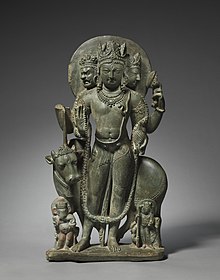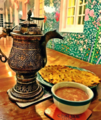
Kashmir is the northernmost geographical region of the Indian subcontinent. Until the mid-19th century, the term "Kashmir" denoted only the Kashmir Valley between the Great Himalayas and the Pir Panjal Range. Today, the term encompasses a larger area that includes the India-administered territories of Jammu and Kashmir and Ladakh, the Pakistan-administered territories of Azad Kashmir and Gilgit-Baltistan, and the Chinese-administered territories of Aksai Chin and the Trans-Karakoram Tract.
Literature of Kashmir has a long history, the oldest texts having been composed in the Sanskrit language. Early names include Patanjali, the author of the Mahābhāṣya commentary on Pāṇini's grammar, suggested by some to have been the same to write the Hindu treatise known as the Yogasutra, and Dridhbala, who revised the Charaka Samhita of Ayurveda.

Kashmiri or Koshur is a Dardic Indo-Aryan language spoken by around 7 million Kashmiris of the Kashmir region, primarily in the Kashmir Valley of the Indian-administrated union territory of Jammu and Kashmir. Kashmiri has split ergativity and the unusual verb-second word order.

The Kashmiri Pandits are a group of Kashmiri Hindus and a part of the larger Saraswat Brahmin community of India. They belong to the Pancha Gauda Brahmin group from the Kashmir Valley, located within the Indian union territory of Jammu and Kashmir. Kashmiri Pandits are Hindu Kashmiris native to the Kashmir Valley, and the only remaining Hindu Kashmiris after the large-scale of conversion of the Valley's population to Islam during the medieval times. Prompted by the growth of Islamic militancy in the valley, large numbers left in the exodus of the 1990s. Even so, small numbers remain.

Dogri is an Indo-Aryan language of the Western Pahari group, primarily spoken in the Jammu region of Jammu and Kashmir, India, with smaller groups of speakers in the adjoining regions of western Himachal Pradesh, northern Punjab, and north-eastern Pakistani Punjab. It is the ethnic language of the Dogras, and was spoken in the historical region of Duggar. It is currently spoken in the districts of Kathua, Jammu, Samba, Udhampur, and Reasi, Unusually for an Indo-European language, Dogri is tonal, a trait it shares with other Western Pahari languages and Punjabi. It has several varieties, all with greater than 80% lexical similarity.

Kashmiri cuisine is the cuisine of the Kashmir Valley of the Indian union territory of Jammu and Kashmir. The cuisine has strong influences from neighbouring regions in central Asia and the Indian subcontinent. Rice has been a staple food in Kashmir since ancient times. The equivalent for the phrase "bread and butter" in Kashmiri is haakh-batta.
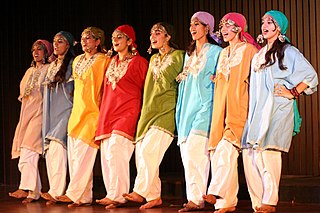
Kashmiris are an Indo-Aryan ethnolinguistic group speaking the Kashmiri language and originating from the Kashmir Valley, which is today located in Indian-administered Jammu and Kashmir.
Dhar is a surname commonly found among the Hindu Bengali Kayastha community in West Bengal, India. Dhar or Dar is also used by some Kashmiri clans and communities native to the Kashmir Valley in Jammu and Kashmir, India, and common today among Kashmiri Hindus and Kashmiri Muslims.

Kashmiriyat is the centuries-old indigenous tradition of communal harmony and religious syncretism in the Kashmir Valley in Indian-administered Kashmir. Emerging around the 16th century, it is characterised by religious and cultural harmony, patriotism and pride for their mountainous homeland of Kashmir.

Sharada Peeth is a ruined Hindu temple and ancient centre of learning located in the Neelum Valley of Pakistan-administered Azad Kashmir in the disputed Kashmir region. Between the 6th and 12th centuries CE, it was among the most prominent temple universities in the Indian subcontinent. Known in particular for its library, stories recount scholars travelling long distances to access its texts. It played a key role in the development and popularisation of the Sharada script in North India, causing the script to be named after it, and Kashmir to acquire the moniker "Sharada Desh", meaning "country of Sharada".
All India Kashmiri Samaj (AIKS) is an organisation for Kashmiri Pandits created to voice the issues associated with the Kashmiri Pandit diaspora Globally.

Professor Ghulam Nabi Firaq was a Kashmiri poet, writer and an educationist.
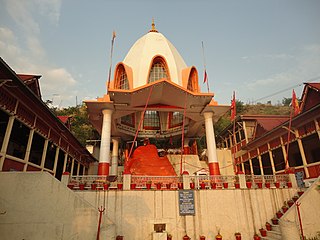
Kashmiri Hindus are ethnic Kashmiris who practice Hinduism and are native to the Kashmir Valley of India. With respect to their contributions to Indian philosophy, Kashmiri Hindus developed the tradition of Kashmiri Shaivism. After their exodus from the Kashmir Valley in the wake of the Kashmir insurgency in the 1990s, most Kashmiri Hindus are now settled in the Jammu division of Jammu and Kashmir and other parts of the country. The largest group of Kashmiri Hindus are the Kashmiri Pandits.
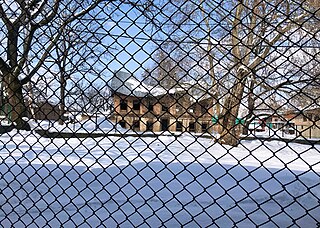
The Exodus of Kashmiri Hindus, or Pandits, is their early-1990 migration, or flight, from the Muslim-majority Kashmir valley in Indian-administered Kashmir following rising violence in an insurgency. Of a total Pandit population of 120,000–140,000 some 90,000–100,000 left the valley or felt compelled to leave by the middle of 1990, by which time about 30–80 of them are said to have been killed by militants.

Kus Bani Koshur Karorpaet is an Indian Kashmiri-language television game show based on Kaun Banega Crorepati. It premiered on 29 April 2019. It had its finale episode aired on 6 July 2019. It is hosted by Rayees Mohiuddin. The show is broadcast on Doordarshan Kashir. On 3 July 2019, muppets Chamki and Grover from the Indian adaptation of Sesame Street, Galli Galli Sim Sim which airs on national sister channel Doordarshan National, made a crossover appearance in the 56th episode of the show by speaking in Hinglish.

Sarazi or Sirazi is an Indo-Aryan language spoken in the Saraz region of the Jammu division of Jammu and Kashmir, India. It is native to the Saraz region, a hilly area taking up the northern half of Doda district and parts of neighbouring Ramban and Kishtwar districts. Sarazi is spoken as a first language by 46,000 people, primarily Hindus, but it is also used as a lingua franca of the Saraz region and so is also spoken as a second language by Muslims, whom are native speakers of Kashmiri.
Kashmiri Transliteration refers to the conversion of the Kashmiri language between different scripts that is used to write the language in the Kashmir region of the Indo subcontinent. The official script to write Kashmiri is extended-Perso-Arabic script in both Jammu-Kashmir and Azad-Kashmir cutting across religious boundaries. Some sections of the Kashmiri Hindu community use an extended-Devanagari script to write the language. Transliteration is hence essential to cross this script-barrier imposed by religious affiliations and convert texts to cater all the Kashmiri people.
Parimoo or Parimu is a Kashmiri Pandit clan and surname native to the Kashmir Valley of Jammu and Kashmir, India. It is used by both Kashmiri Hindus and Kashmiri Muslims.
Kaw, also spelt as Kao, is a Kashmiri Pandit clan and surname, native to the Kashmir Valley in Jammu and Kashmir, India.

